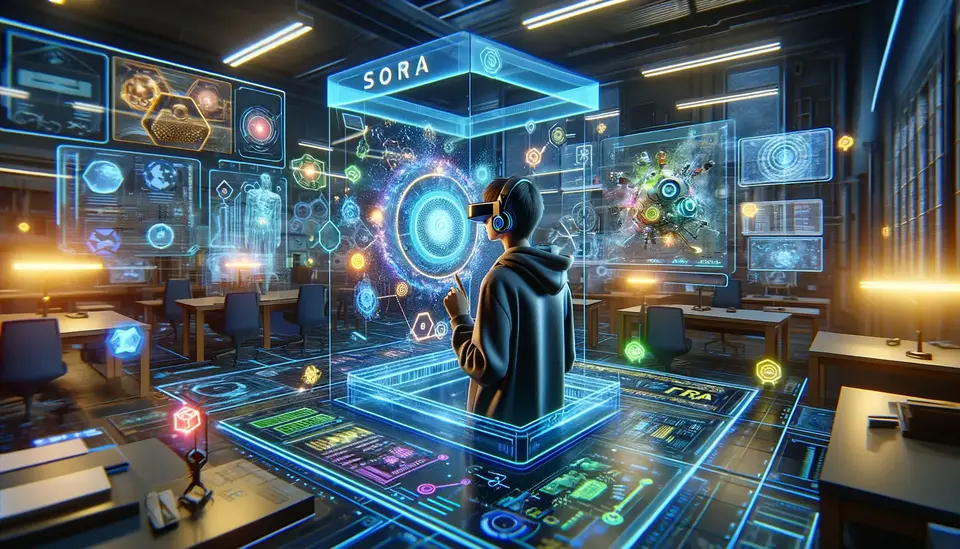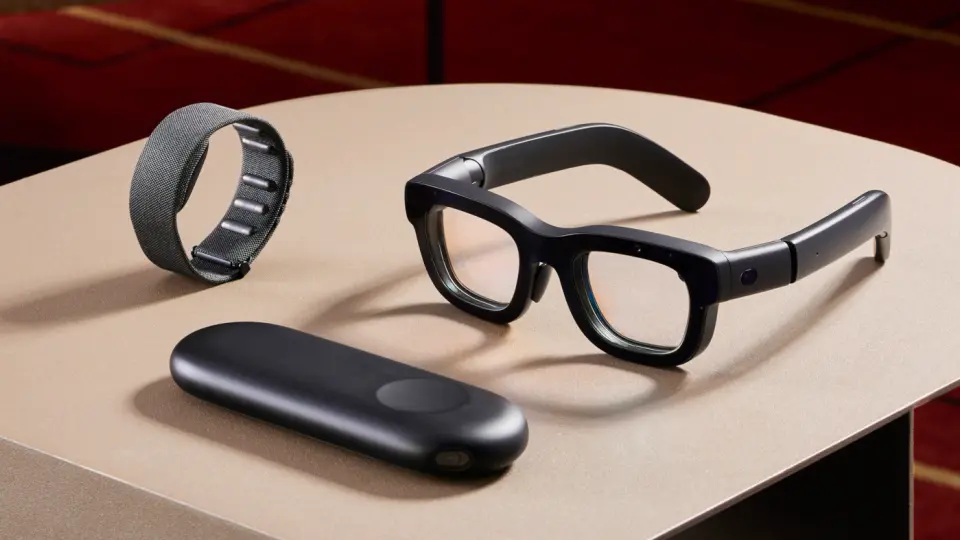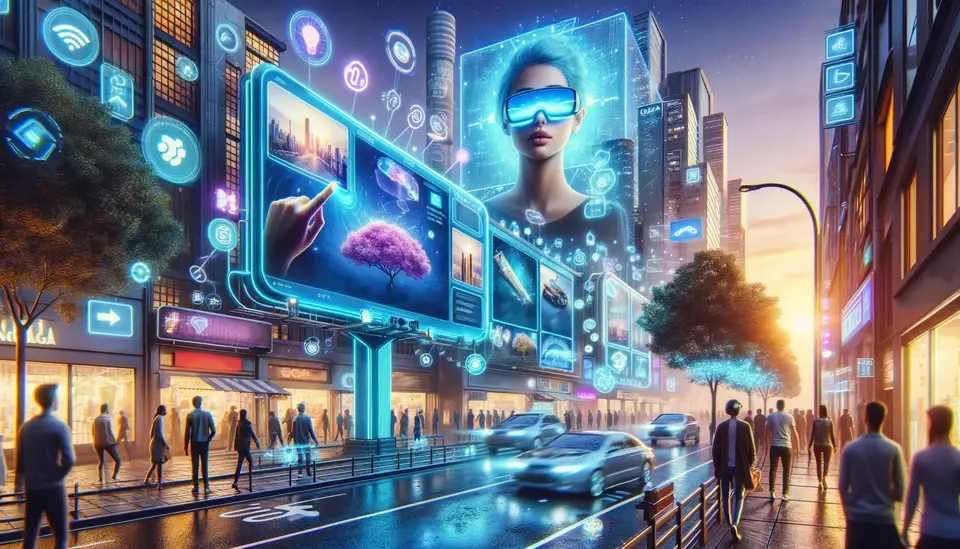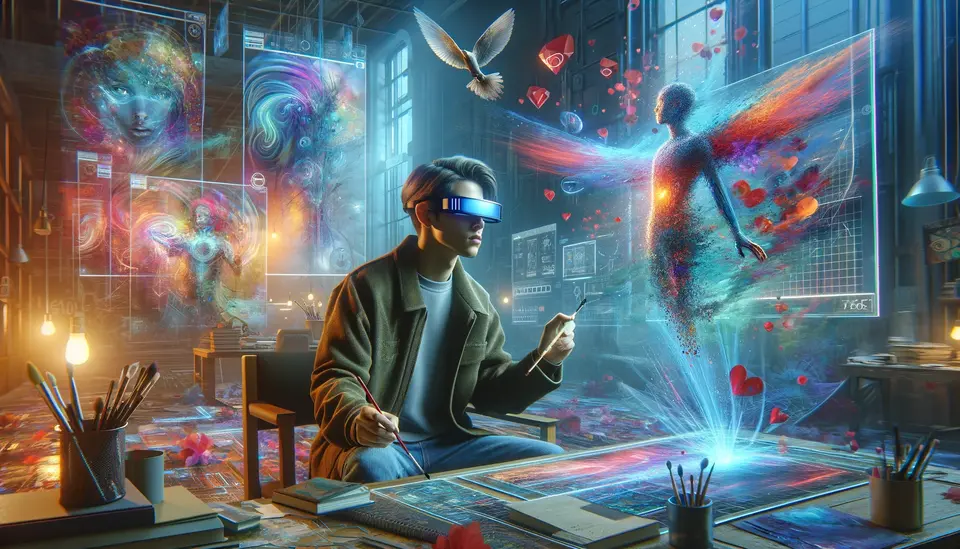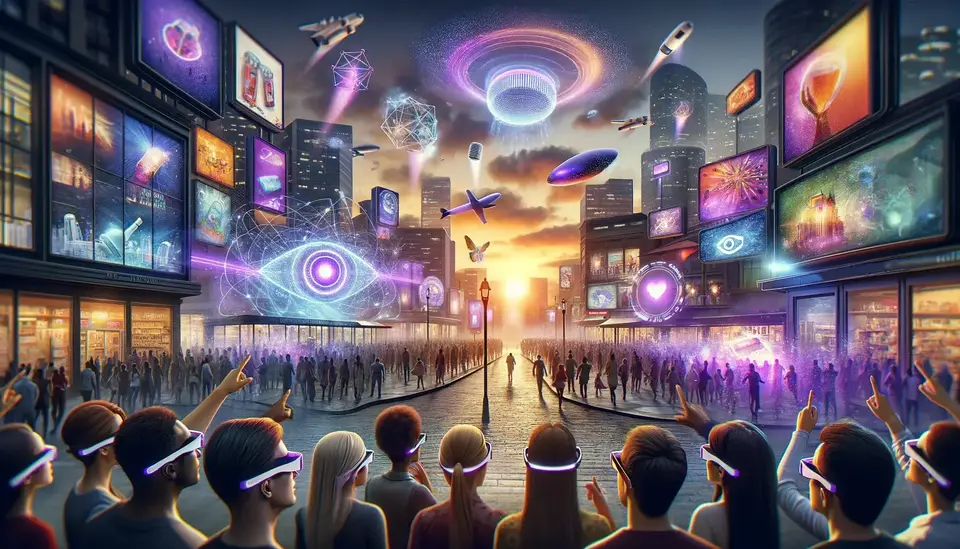Sora's Impact on Augmented Reality (AR) Content Creation
Posted on February 27, 2024 8 minutes 1704 words
Table of contents
- 1. Introduction
- 2. The Evolution of AR Content Creation
- 3. Understanding Sora’s Technical Framework
- 4. Sora’s Role in Enhancing AR Experiences
- 5. Sora’s Influence on AR Content Production
- 6. Creative Applications of Sora in AR
- 7. The Intersection of Sora and AR in Various Industries
- 8. Challenges and Limitations
- 9. The Future of AR with Sora
- 10. Conclusion
1. Introduction
A. Overview of Augmented Reality (AR)
Augmented Reality (AR) represents a significant technological advancement, blending digital elements with the real world. AR enhances users’ perception of reality by overlaying digital information on live camera feeds, making it a powerful tool in various fields, from entertainment to education and beyond.
B. Introduction to Sora and its Capabilities
Sora, an AI model developed by OpenAI, represents a leap in video generation technology. It can create realistic and imaginative scenes from text instructions, generating videos that maintain visual quality and adhere closely to the user’s prompt. Sora’s ability to interpret complex prompts and produce detailed visual content makes it a promising tool for AR content creation.
C. The Significance of Sora in AR Content Creation
Sora’s advanced capabilities could revolutionize AR content creation. By generating dynamic and high-quality video content from simple text prompts, Sora offers the potential to greatly simplify and enhance the process of creating immersive AR experiences.
2. The Evolution of AR Content Creation
A. Historical Context and Early Developments in AR
AR technology has evolved from simple text overlays and image recognition to complex interactions with the real world. The journey from early head-mounted displays to today’s sophisticated AR apps reflects significant technological advancements.
B. Challenges in Traditional AR Content Creation
Traditional AR content creation involves complex processes, including 3D modeling, animation, and software development. These processes can be resource-intensive and require specialized skills, limiting the accessibility of AR technology for creators.
C. The Need for Advanced Tools like Sora in Modern AR Applications
As AR applications become more sophisticated, the demand for tools that can quickly generate high-quality, realistic content has grown. Sora’s ability to create detailed visual content tailored to specific prompts addresses this need, potentially transforming AR content development.
3. Understanding Sora’s Technical Framework
A. An Overview of Sora as a Diffusion Model
Sora operates as a diffusion model, trained to transform input noisy patches into clear, detailed video content. This process allows Sora to generate high-fidelity videos from a wide range of inputs, making it ideal for diverse AR applications.
B. How Sora’s Transformer Architecture Benefits AR Content Creation
Sora’s transformer architecture enables it to scale effectively across various domains, including language modeling and image generation. This scalability is crucial for AR, where diverse and high-quality content is key to immersive experiences.
C. The Significance of Sora’s Variable Duration, Resolution, and Aspect Ratio Capabilities
One of Sora’s key features is its ability to create content in various durations, resolutions, and aspect ratios. This flexibility allows for the production of AR content that is adaptable to different devices and use cases, enhancing the user experience across various platforms.
4. Sora’s Role in Enhancing AR Experiences
A. How Sora Contributes to More Immersive AR Environments
Sora’s capability to generate high-resolution images and videos with dynamic camera motion significantly enhances AR environments. By simulating realistic interactions and maintaining 3D consistency, Sora provides AR experiences that are more immersive and lifelike. This level of detail and consistency is essential for creating AR content that seamlessly integrates with the real world, enhancing the user’s sense of presence and engagement.
B. The Importance of Realistic Video Generation in AR
The realistic video generation by Sora is crucial in AR for maintaining believability and immersion. Sora’s ability to produce high-detail and photorealistic visuals, ranging from natural scenes to digital art, ensures that AR content is not only engaging but also convincingly integrates with the real world. This realism is key to providing an AR experience that is both interactive and impactful.
C. Case Studies or Examples of Sora-Enhanced AR Experiences
While specific case studies of Sora-enhanced AR experiences are currently not available, its potential applications are vast. For example, in educational AR applications, Sora could generate detailed simulations of historical events or scientific phenomena. In retail, it could create lifelike product models, allowing customers to visualize products in their own space with high accuracy.
5. Sora’s Influence on AR Content Production
A. Simplifying the AR Content Creation Process with Sora
Sora simplifies the AR content creation process by generating complex visual content from textual descriptions. This ability reduces the need for extensive manual modeling and texturing, allowing creators to focus on the design and interaction aspects of AR, thereby streamlining the production process.
B. Comparing Traditional Methods with Sora’s Approach
Traditional AR content creation often involves intricate and time-consuming processes like 3D modeling and animation. Sora, however, enables a more direct and efficient approach by generating content from text, bypassing many of the steps required in traditional methods.
C. The Impact of Sora on AR Industry Efficiency
The introduction of Sora into AR content production could significantly enhance industry efficiency. It enables faster content creation, allows for rapid prototyping and iteration, and makes AR development more accessible to creators who may not have specialized skills in 3D modeling and animation.
6. Creative Applications of Sora in AR
A. Exploring New Frontiers in AR Storytelling and Design with Sora
Sora opens up new frontiers in AR storytelling and design, enabling creators to experiment with complex narratives and detailed visual content. Its ability to understand and simulate real-world dynamics can be leveraged to create AR experiences that are not only visually stunning but also narratively rich.
B. Unique AR Experiences Made Possible by Sora
The potential for unique AR experiences with Sora is immense. From interactive educational content that brings textbook illustrations to life to immersive retail experiences allowing users to try products virtually, Sora’s capabilities can significantly enhance the way we interact with AR content.
C. The Future Potential of Sora in AR Content Creation
Looking to the future, Sora’s role in AR content creation holds immense potential. Its ongoing development could lead to more advanced simulations, including the ability to interact with the AR environment in more meaningful ways, such as through gestures or voice commands, paving the way for more intuitive and immersive AR applications.
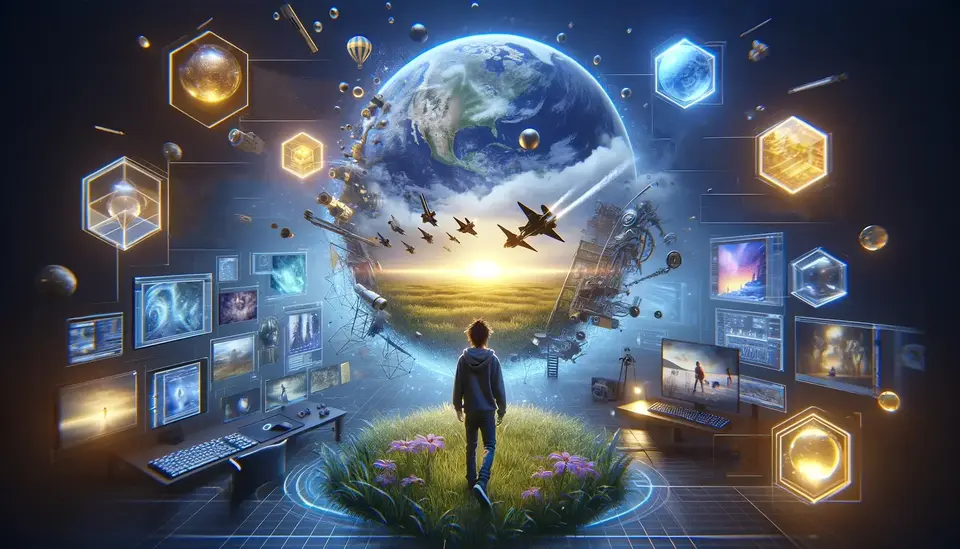
7. The Intersection of Sora and AR in Various Industries
A. Sora’s Application in Education, Training, and Entertainment
Sora’s capabilities in generating high-resolution, detailed images and videos make it an invaluable tool in education and training. For instance, in AR educational applications, Sora can create lifelike historical recreations or scientific simulations, enhancing learning experiences. In training, particularly for tasks requiring precision, Sora’s ability to simulate real-world scenarios can provide a safe yet effective learning environment. In the entertainment sector, Sora can generate immersive AR experiences, elevating gaming and interactive storytelling to new levels.
B. The Role of Sora in Enhancing Retail and Marketing through AR
In retail and marketing, Sora can revolutionize the way products are showcased and experienced. Its ability to create photorealistic images and videos of products can be used to create interactive AR catalogs, allowing customers to virtually try products in real-world settings. This can lead to more engaging and informative shopping experiences, potentially increasing customer engagement and sales.
C. Future Industrial Applications of Sora in AR
Looking to the future, Sora’s potential applications in various industries are vast. From architectural visualization, where detailed models of buildings can be explored in AR, to healthcare, where it can be used for patient education or surgical planning, Sora’s impact can be far-reaching. Its ability to simulate both the physical and digital worlds suggests a future where AR can be used to model complex systems and processes in a variety of industries.
8. Challenges and Limitations
A. Addressing the Current Limitations of Sora in AR Contexts
While Sora offers remarkable capabilities, it is not without its limitations. Challenges include ensuring accuracy in the simulation of physics and interactions, as well as overcoming occasional incoherencies in long-duration samples or spontaneous appearances of objects. Addressing these challenges is crucial for ensuring the reliability and effectiveness of Sora in AR applications.
B. The Ongoing Development and Future Improvements of Sora
The development of Sora is an ongoing process, with future improvements expected to enhance its capabilities further. Advances in machine learning and AI are likely to solve current limitations, leading to more accurate and versatile AR content generation. Continued research and development will play a key role in realizing the full potential of Sora in AR.
C. Ethical Considerations in AR Content Creation with Sora
As with any powerful technology, the use of Sora in AR raises ethical considerations. Issues such as privacy, data security, and the potential for misuse must be addressed. Ensuring that Sora is used responsibly and ethically will be crucial as its applications in AR expand.
9. The Future of AR with Sora
A. Predictions and Trends in AR Content Creation
The future of AR content creation with Sora is likely to be marked by increased realism, interactivity, and accessibility. Sora’s ability to generate detailed and dynamic content quickly and efficiently could democratize AR content creation, making it accessible to a wider range of creators.
B. Sora’s Long-Term Impact on AR Technology and Experiences
Sora has the potential to significantly impact AR technology and experiences. By enabling the creation of more realistic and interactive AR content, Sora can drive innovation in the field, leading to new applications and improvements in user experience.
C. Final Thoughts on the Evolving Landscape of AR and AI Technologies
The integration of AI technologies like Sora into AR represents a convergence of two cutting-edge fields. This integration is likely to drive significant advancements in how we interact with digital content, creating more immersive and intuitive AR experiences.
10. Conclusion
A. Recap of the Transformative Impact of Sora on AR
This blog post explored the transformative impact of Sora on AR, highlighting its capabilities and potential applications in various industries, as well as the challenges and future prospects.
B. The Broader Implications of Sora in the AR Industry
Sora’s advancements in AR content creation have broader implications for the industry, suggesting a future where AR is more accessible, realistic, and interactive.
C. Encouraging Continued Innovation and Exploration in AR
As Sora continues to evolve, it is important to encourage continued innovation and exploration in AR. Embracing these technologies can lead to groundbreaking developments and new ways to interact with our world.

